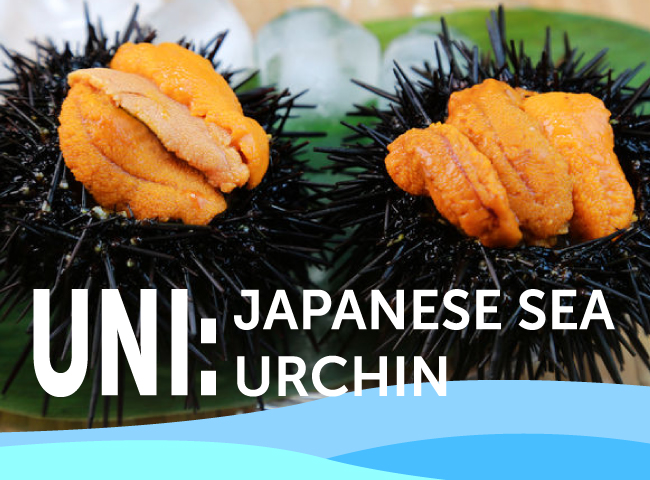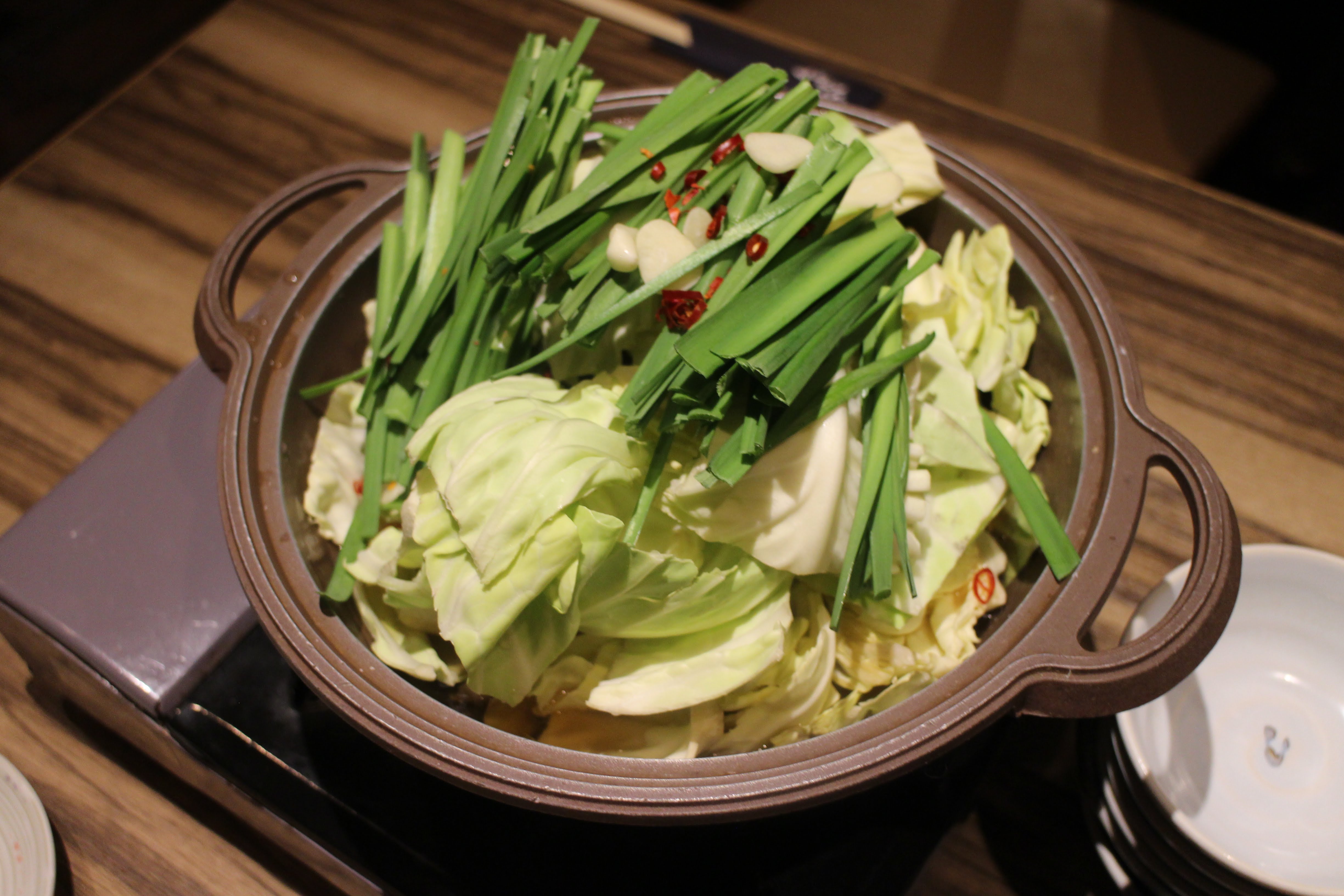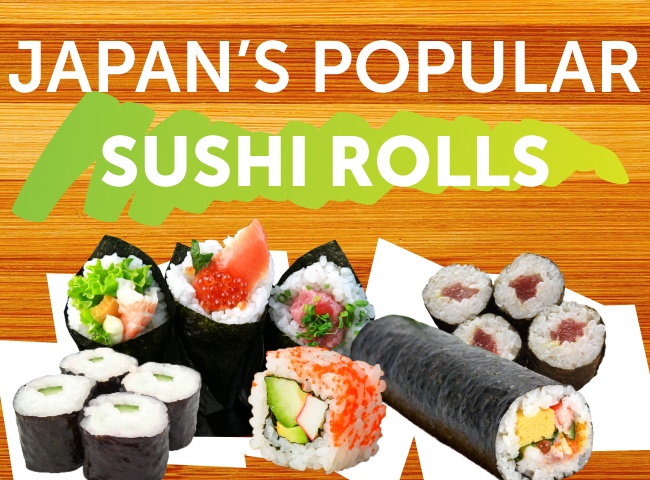Kanto Food vs Kansai Food: Japan’s Inner Battle for Culinary Supremacy
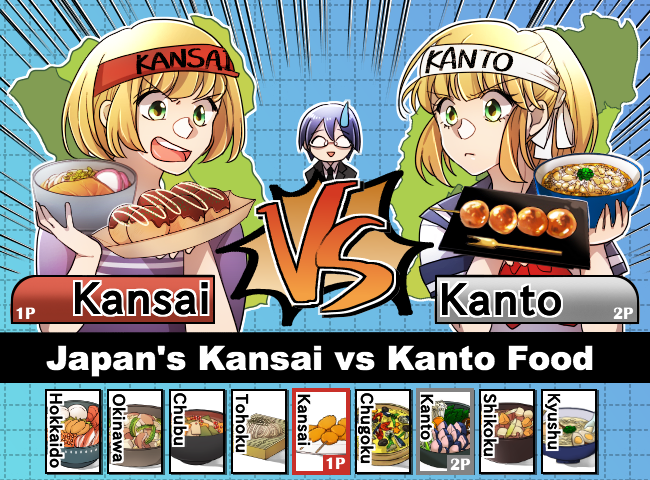

In Japan, the western region known as Kansai and the eastern region known as Kanto are distinct in everything from their sense of humor to which side of the escalator to stand. Kyoto in Kansai was home to the Japanese nobility for centuries, while Tokyo in Kanto was the place where the shogun established his military government, and which eventually became Japan’s modern capital.
Today, the two areas still have quite distinct regional differences, particularly when it comes to food. Tokyo is a gourmet metropolis with more Michelin-starred restaurants than any other city in the world. Kansai people are passionately enthusiastic about their local cuisine, with Kyoto’s esteemed Kyo-ryori and Osaka’s famous street food. There is an old saying that people from Osaka will spend all of their money indulging in food and drink until they go bankrupt.
These differences in the cuisines can be seen throughout the unique flavor profiles, ingredients and cooking methods used, and notable dishes of the regions.
Kansai vs Kanto Flavors
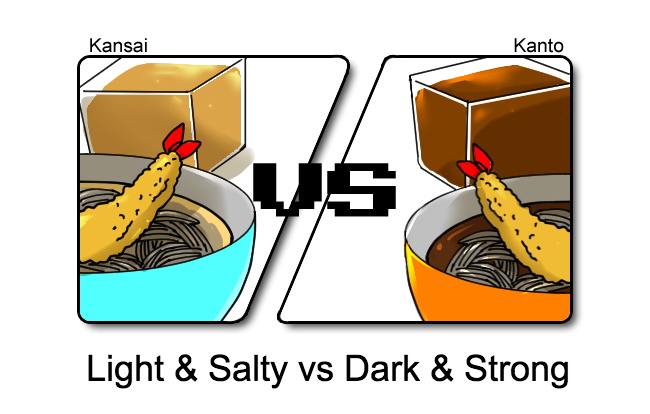
Kansai food is based around dishes made with kombu dashi (seaweed broth) and usukuchi soy sauce. Usukuchi soy sauce has a salty flavor that’s said to bring out the rich flavor of kombu, as well as a light color that prevents ingredients from darkening, which preserves their appearance in a dish. Kanto food on the other hand uses broth made from katsuo (bonito fish) flakes and koikuchi soy sauce. Koikuchi soy sauce is less salty, but darker in color and has a strong flavor that stands up to the fishiness of katsuo-based broth. These broth-and-soy-sauce combinations are used in everything from soup and noodles to braised dishes in both Kansai and Kanto.
In addition, the miso variety of preference differs from west to east. Lightly colored and flavored, naturally sweet saikyo (‘Western capital’) miso paste is prevalent in Kansai cooking. Aka (red) miso is more common in Kanto, and has a pungent flavor that’s more assertive than white miso.
Kansai vs Kanto Ingredients

Kansai cuisine has a stronger emphasis on beef, while Kanto cuisine has a stronger emphasis on pork, which is because Kansai was traditionally Japan’s cattle country. To this day the region has many famous beef producing areas such as Kobe and Tajima in Hyogo prefecture, as well as Matsusaka in Mie and Omi in Shiga. Meanwhile, Kanto was the premiere area for horse breeding with vast plains well-suited for it. Because so much effort was spent on breeding quality horses for samurai warriors, the Kanto region relied on pork for meat, as pigs were easier to raise than cattle. As a result, dishes like katsu (a breaded and fried cutlet) and nikujaga (braised meat and potatoes) are typically made with pork in Kanto rather than beef.
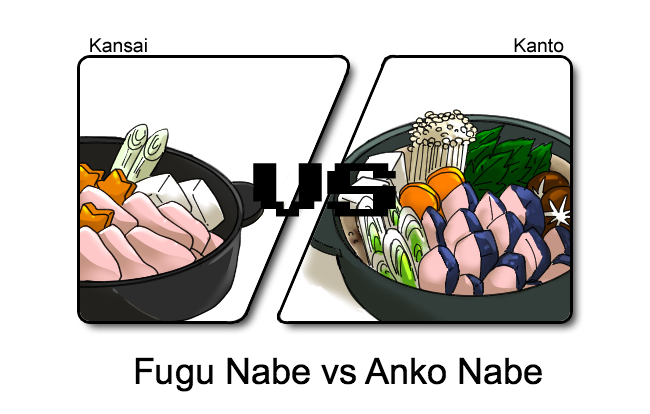
The preferred fish for winter hot pot differs also between the regions. An old saying goes, “fugu in the west, anko in the east”, meaning blowfish in Kansai and anglerfish in Kanto. These two fish have a grotesque appearance and are considered a huge delicacy.
Kansai vs Kanto Preparation Methods
Chefs in Kansai and Kanto have come to use different styles of knives over time. In Kansai, the birthplace of Japanese haute cuisine kaiseki ryori, chefs used knives with a pointed tip, which allowed them to do delicate knife work required to cut decorative shapes out of food. In Kanto, chefs used to work from a seated position while cutting and chopping, and flatter edged knives with a blunt tip were better suited to this kind of work.
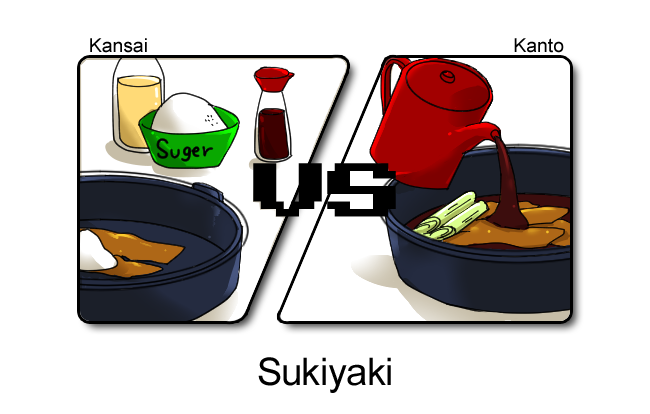
Cooking techniques also differ between the two regions. To make sukiyaki, in the Kansai region beef is fried in fat and browned with sugar before adding liquid ingredients, while in Kanto the liquid ingredients are mixed together to make a warishita sauce for simmering the meat in. For tempura, the Kansai region favors vegetable tempura fried in a neutral oil and served with salt, while in Kanto tempura includes both fish and vegetables, fried in a mixture of regular and sesame oil, and served with a soy sauce-based dipping sauce.

Some styles of sushi are also different, mainly due to the fact that the Kanto region is located right on the ocean, while the Kansai region is further inland and wasn’t able to enjoy fresh fish before modern refrigeration. As a result, Kanto region specializes in Edomae, or nigiri sushi—the typical ball of rice with raw fish topping—served with soy sauce, while Kansai specializes in oshizushi, a type of pressed sushi of pickled fish flavored with dashi seasoning that’s molded in a special box. Chirashi-zushi, a dish of sushi rice with scattered toppings sprinkled over it, is also different in the two regions. In Kansai, chirashi-zushi is not made with raw fish, but in Kanto raw fish is a popular topping.
Popular Kansai Dishes vs Popular Kanto Dishes
Each region specializes in its own unique dishes, but some of the most popular dishes can be seen as counterparts to each other.
Street Food: Takoyaki vs Yaki Manju

When it comes to street food, in Kansai you’ll find takoyaki—fried balls of batter filled with pieces of octopus, and topped with a Worcestershire-style sauce, mayonnaise, bonito flakes and powdered seaweed. In Kanto there’s yaki manju, dumplings that are steamed, then basted in a spicy but sweet miso sauce as they’re grilled over a charcoal flame, giving them a fluffy texture and enticing aroma.
Grilled Savory Pancake: Okonomiyaki vs Monjayaki

Both areas also specialize in their own pancake-style dishes cooked on a flat grill top. In Kansai, it’s okonomiyaki, a batter filled with a mixture of delicious ingredients, topped with sauce and other condiments. In Kanto, it’s monjayaki, made by frying various ingredients together, forming them into a ring, and then pouring a runny batter into the center to be eaten with mini spatulas.
Fish Dish: Funazushi vs Namero
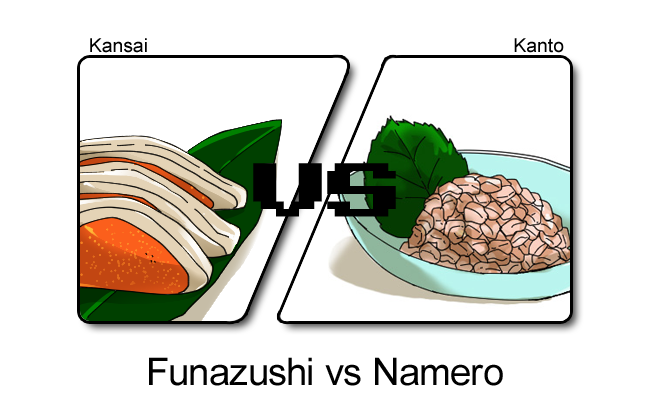
Funazushi is one of the oldest kinds of sushi in Japan. It’s made with fermented funa fish, found in Lake Biwa in Kansai’s Shiga Prefecture. The fish is pickled with salt and rice and fermented for several years in a long process that gives this delicacy its strong smell and sharp vinegar flavor. Fans of this uniquely traditional sushi swear by the taste. On the Kanto side, namero is a traditional fisherman’s dish from Chiba prefecture. It’s made of roughly chopped fish - usually mackerel, which has quite a strong flavor - mixed with ginger, miso, green onion, vinegar, and other condiments to help neutralize any strong fishy odors. The dish is said to be named for the Japanese word “nameru”, meaning “to lick”, because it’s so delicious that you’ll want to lick your plate.
For more insight into dishes of Kansai, see 10 Kansai Food Sensations: From Tofu to Fugu, and for the Kanto region, see Delicious Dishes of the Kanto Region: Monjayaki, Yuba & More.
The Wide Variety of Kansai Food and Kanto Food Contributes to the Diversity of Japanese Cuisine
Kansai and Kanto each have their own distinct regional styles of cuisine, both worthy of the centuries of tradition behind them. Be sure to give them a try, as well as the rest of the regional cuisines of Japan!


